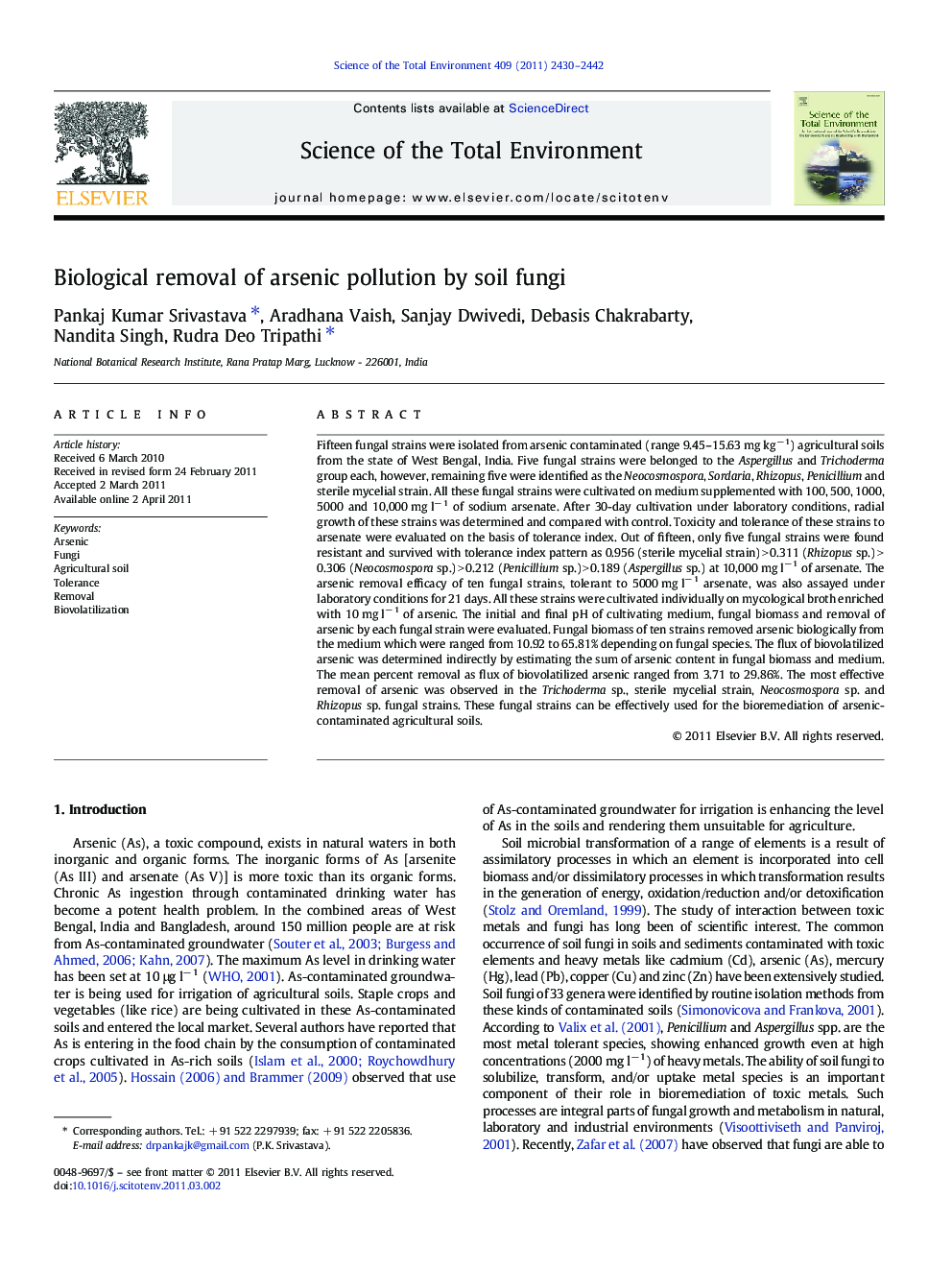| کد مقاله | کد نشریه | سال انتشار | مقاله انگلیسی | نسخه تمام متن |
|---|---|---|---|---|
| 4430278 | 1619850 | 2011 | 13 صفحه PDF | دانلود رایگان |

Fifteen fungal strains were isolated from arsenic contaminated (range 9.45–15.63 mg kg− 1) agricultural soils from the state of West Bengal, India. Five fungal strains were belonged to the Aspergillus and Trichoderma group each, however, remaining five were identified as the Neocosmospora, Sordaria, Rhizopus, Penicillium and sterile mycelial strain. All these fungal strains were cultivated on medium supplemented with 100, 500, 1000, 5000 and 10,000 mg l− 1 of sodium arsenate. After 30-day cultivation under laboratory conditions, radial growth of these strains was determined and compared with control. Toxicity and tolerance of these strains to arsenate were evaluated on the basis of tolerance index. Out of fifteen, only five fungal strains were found resistant and survived with tolerance index pattern as 0.956 (sterile mycelial strain) > 0.311 (Rhizopus sp.) > 0.306 (Neocosmospora sp.) > 0.212 (Penicillium sp.) > 0.189 (Aspergillus sp.) at 10,000 mg l− 1 of arsenate. The arsenic removal efficacy of ten fungal strains, tolerant to 5000 mg l− 1 arsenate, was also assayed under laboratory conditions for 21 days. All these strains were cultivated individually on mycological broth enriched with 10 mg l− 1 of arsenic. The initial and final pH of cultivating medium, fungal biomass and removal of arsenic by each fungal strain were evaluated. Fungal biomass of ten strains removed arsenic biologically from the medium which were ranged from 10.92 to 65.81% depending on fungal species. The flux of biovolatilized arsenic was determined indirectly by estimating the sum of arsenic content in fungal biomass and medium. The mean percent removal as flux of biovolatilized arsenic ranged from 3.71 to 29.86%. The most effective removal of arsenic was observed in the Trichoderma sp., sterile mycelial strain, Neocosmospora sp. and Rhizopus sp. fungal strains. These fungal strains can be effectively used for the bioremediation of arsenic-contaminated agricultural soils.
► Biological removal of arsenic by different fungal strains.
► Fungal strains isolated from arsenic contaminated soils.
► Five fungal strains resistant at 10,000 mg l− 1 of arsenate.
► Flux of biovolatilized arsenic ranged from 3.71 to 29.86%.
► Fungal strains can be effectively used for the bioremediation of arsenic-contaminated agricultural soils.
Journal: Science of The Total Environment - Volume 409, Issue 12, 15 May 2011, Pages 2430–2442